Delidding The AMD Ryzen 5 2400G APU: How To Guide and Results
by Gavin Bonshor on May 10, 2018 8:00 AM EST- Posted in
- CPUs
- Guides
- APUs
- Ryzen
- Ryzen 3 2200G
- Ryzen 5 2400G
- Delidding
- Delid
Delidding The Ryzen 5 2400G Results and Conclusion
There has been a lot of hype since the launch of the Ryzen 2000 series APUs and in our Ryzen 5 2400G review, it’s noted that in multiple scenarios they outperform the competing Intel counterparts second to none in pixel rendering tests such as gaming, mainly thanks in no small part to the integrated iGPU featuring Vega cores. The aim of today’s testing with our best Ryzen 2000 series APU from a purely CPU frequency-based standpoint was to ascertain whether delidding makes a noticeable improvement to thermal performance, as well as determining if any extra headroom in CPU core frequency is made available.
As per our regular motherboard testing methodology when we find the max stable overclock, testing was done following the same procedure. Following on from the testing done in our Ryzen 2000 series APU overclocking guide, the aim in this was to continue with simple overclocking to push the core frequency.
To start, here are our initial overclocking results with the retail chip as sold:
After delidding the chip, replacing the paste with a liquid metal TIM, we achieved the following results:
Not only are the thermal properties improved from delidding and having the IHS slavered up with Thermal Grizzly Conductonaut liquid metal compound but operating at the previously unstable frequency of 4.2 GHz was made possible after delidding. Even at 4.2 GHz with the 2400G delidded, the temperatures hit the same levels as 4.0 GHz non delidded which is quite impressive. Even more monumental was the system managed to boot into Windows 10 at a clock speed of 4.3 GHz, although the system wouldn’t just hang when OCCT was fired up, it would crash completely meaning that even with a good AIO CPU cooler and being de-lidded, no more than 4.2 GHz was stable with this particular chip.
The best way to represent some of this data is in graphs. First up is the main one, temperature:
This is a clear representation showing the decrease in CPU temperature after the delidding process. The higher the frequency, the bigger the overall difference!
For power consumption, there was almost zero difference. This is to be expected: the chip will still consume the same amount of power with a standard temperature window. The cooler still has to remove the heat energy, however it is now being transferred better to the cooler through the new TIM.
The interesting result here is POV-Ray. We use POV-Ray in our overclock testing as it is usually very good if there are cache and memory errors associated with the high frequency. However here we see that beyond about 3.8 GHz, the retail processor has trouble getting more performance at a higher frequency, likely due to the CPU reaching thermal limits and the frequency mechanisms having to compensate. The end result is 'sustained' performance at higher frequencies. Due to the delid process, this was not an issue through to 4.2 GHz. Having the extra thermal headroom ultimately gave both more frequency and better sustained performance.
Is Delidding the Ryzen 2400G Worth it? Risk Versus Reward
As previously stated, the primary use where I could see delidding a Ryzen 2000 series APU viably applicable would be in a situation where cooling restrictions are in place such as a small form factor system or a HTPC. The benefits of the reduction in temperature would allow for a more svelte and slim line cooler to be used without pushing towards the maximum operating temperature.
Another less but pertinent use would be for performance users wanting faster clock speeds, although at a cost of voiding the warranty, potentially damaging and killing the chip itself during the process, and the added cost of the tools, it could be a price too much in retrospective which could be spent on a better CPU to begin with. Some vendors in the EU such as Caseking are actually selling pre-delidded Ryzen 3 2200G and Ryzen 5 2400G chips with their own warranties at an additional cost, which is often a better idea than manually performing the process and shelling out for the extra tools. That’s all good, providing this option is available to the user, although so far, I have yet to be able to find a large vendor offering this service in the US.


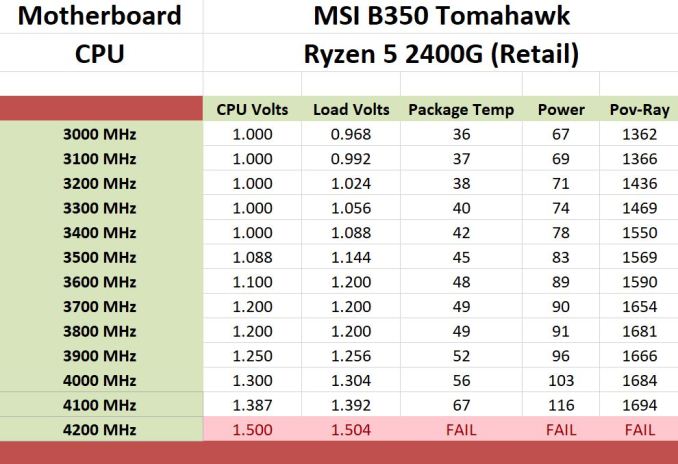
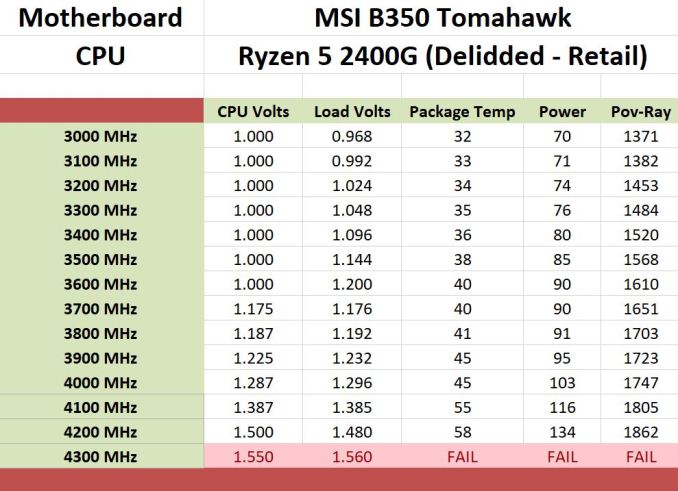
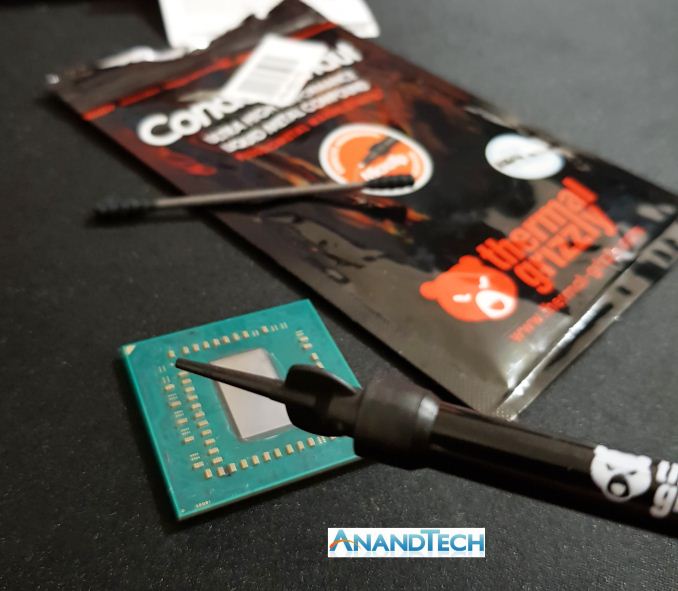
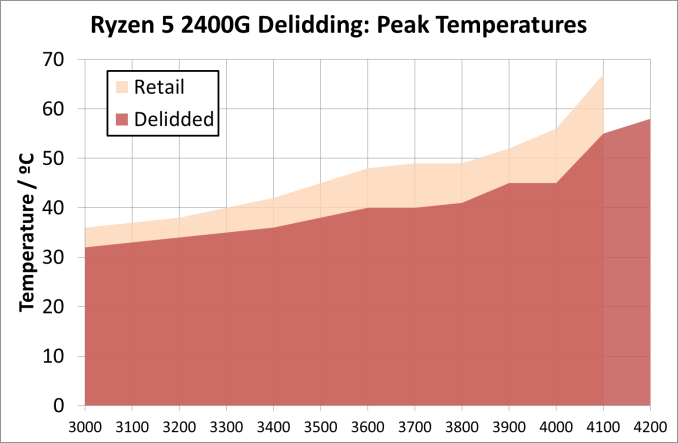

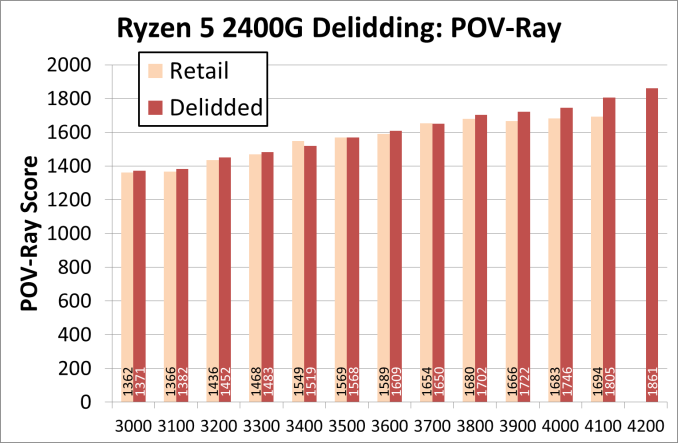








73 Comments
View All Comments
MajGenRelativity - Thursday, May 10, 2018 - link
Thank you for the very detailed process description and results.gavbon - Thursday, May 10, 2018 - link
Not a problem :)Cellar Door - Thursday, May 10, 2018 - link
Thanks Gavin, top notch guide!eva02langley - Thursday, May 10, 2018 - link
How about the iGPU results? I was actually only looking for those to be honest.As for CPU scores alone, it doesn't worth it. However, for gaming... does it worth it?
gavbon - Thursday, May 10, 2018 - link
I do have a planned piece I need to finish up on the effects of GPU scaling on frame rates in games (average and 99th percentile). Overclocking, delidding, CPU frequency scaling, Memory scaling and iGPU scaling are the plan :)polyzp - Thursday, May 10, 2018 - link
This would be amazing! Would love to see the absolute peak performance (with gpu clock and ram speed and latency as priority over cpu speed). 3600 cl 14 on the ram would be ideal, or using the stilts 3466 llc setting for bdie.Lolimaster - Thursday, May 10, 2018 - link
Aside from temps delidding makes nothing else for the APU, you can get the same max igpu clock on any random 2400G.What we need to see is the limitis of the MC, 1700Mhz igpu OC + 3466 CL14 or 3600 CL15 memory if higher.
Lolimaster - Thursday, May 10, 2018 - link
OC the worthless cpu part hinders the max igpu clocks. It's 3.6Ghz base anyway...Ket_MANIAC - Thursday, May 10, 2018 - link
This is the real stuff. OCing the CPU to modest clocks like 3.8 is more than enough. Its the GPU OC which matters the most. Waiting for that part.wumpus - Thursday, May 10, 2018 - link
I'd certainly like to see OCs done with the stock heatsink. There's little point in watercooling a GPU with all the performance of a nvidia 1030...